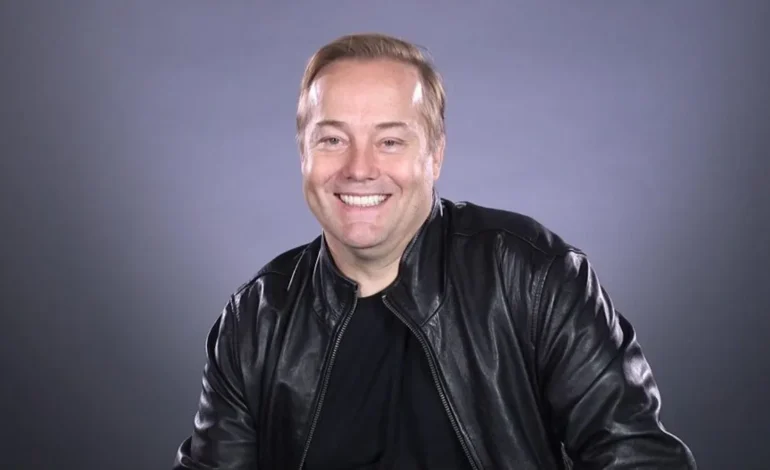Jason Calacanis Net Worth: Master Content Strategies

Ever wondered how someone goes from humble beginnings to staking claims as one of tech’s most recognizable voices? If you’re hunting for clues on building wealth in the digital age—without falling into hype or jargon—Jason Calacanis’s story offers some answers (and cautionary tales). Sure, “net worth” catches attention, but what sits underneath those numbers? The worries aren’t just about dollars: How do you spot game-changing trends before anyone else? What if you don’t have connections in Silicon Valley? And is it even possible to crack into venture investing without old money backing you up?
That’s where this report steps in. We trace Calacanis’s path using hard data and vivid anecdotes—from launching niche publications out of New York’s scrappy startup scene to becoming a fixture on major podcasts and deal rooms across tech hubs. You’ll get insights not just into the sums involved (spoiler: estimates range widely), but also the real moves that built his reputation—and portfolio—in ways newcomers can actually learn from.
Contributions from social media and influencer marketing professionals, entrepreneurs in the tech space, and financial analysts specializing in venture capital have enriched this report with their expertise and insights. Their input ensures a balanced and comprehensive understanding of Calacanis’s impact on the digital entrepreneurship landscape.
From Brooklyn Roots To Tech Pioneer Status: Early Life And Formative Moves
Calacanis didn’t arrive pre-packaged for Silicon Valley stardom. Growing up in Brooklyn’s Bay Ridge neighborhood meant being surrounded by grit more than glamour—a reality that shaped both his risk appetite and work ethic.
He has always been candid about not coming from money or having early access to elite networks. Instead, curiosity ruled: He hustled through odd jobs while keeping an eye out for “what’s next” long before Twitter feeds made FOMO mainstream.
All of which is to say—the leap from East Coast underdog to West Coast insider was anything but guaranteed.
The funny thing about entrepreneurial journeys is how quickly failure flips into leverage when paired with resilience. In Jason’s case:
- Learning technical basics himself rather than outsourcing—an unusual move back when coding felt like black magic.
- Building relationships beyond transactional networking; community always beat clout-chasing.
- Pushing past gatekeepers by starting something new instead of waiting for permission.
This foundation set him apart once he decided New York had its own version of Silicon Valley brewing—a thesis that would soon be tested with real stakes.
Pivotal Wealth-Building Milestones: From Media Maverick To Angel Investor
There are turning points every entrepreneur remembers—the moments you double down or walk away entirely. For Jason Calacanis, several critical moves changed everything:
- The Launch Of Silicon Alley Reporter: In the late ’90s, New York wasn’t exactly known as a technology hotbed. That didn’t stop him from founding Silicon Alley Reporter out of sheer conviction that local startups deserved national attention—not just another blog post lost in cyberspace. This publication did more than chronicle fledgling companies; it created connective tissue among founders who felt isolated from West Coast energy. It built trust—and drew advertisers hungry for relevance—which translated directly into revenue streams rarely seen in bootstrapped media at the time.
- Cashing Out At The Right Time: Selling off interests in Silicon Alley Reporter didn’t make him instantly wealthy by today’s standards—but it freed up capital and credibility for bigger bets ahead. Notably, this move gave him two things few entrepreneurs value enough early on:
- An insider view on what separates short-lived hype cycles from true market shifts.
- The Uber Investment Story: Here comes one of those origin tales you hear whispered at every pitch event—the now-famous bet on Uber during its earliest fundraising rounds. No one could’ve predicted ride-sharing would reshape urban life globally; plenty dismissed it outright as risky noise compared to established players. But here lies a core lesson: identifying teams solving deeply annoying problems (like hailing cabs) will almost always trump incremental improvements elsewhere. The upside when Uber went public was massive—even after accounting for dilution over subsequent funding rounds.
- Diversifying Into Web3 And Beyond: More recently, Jason has leaned hard into Web3 technologies—from decentralized apps (dApps) to NFTs—as part of an evolving thesis around digital property rights.
- This willingness to rethink convictions keeps him relevant—even as platforms shift underfoot.
| Pivotal Moment/Move | Description/Impact |
| Bare-bones beginnings (Brooklyn hustle) | Instilled discipline & sharpened risk radar far removed from coastal privilege bubbles. |
| Silicon Alley Reporter launch/sale | Became blueprint for independent media monetization plus springboard into VC circles previously closed-off to outsiders. |
| Early Uber investment win</td > | Set template for high-reward angel deals—spotting user painpoints trumps incremental “me-too” products every time.</td > </tr >< td > Pivot towards Web3 ventures </ td > < td > Showcases adaptive mindset—new sectors become less intimidating after firsthand pattern recognition experience . </ td > </ tr > </table > For those wondering whether it all really adds up financially—the estimated jason calacanis net worth hovers between $50 million and $100 million as of last year , according to industry watchers analyzing public records plus private disclosures . < br > The problem is , even solid estimates often miss nuances : much value gets locked up inside fast-growing startups — meaning liquidity swings dramatically based on market cycles . < / div > < h2 > Establishing A Platform : How Silicon Alley Reporter Changed The Game </ h2 > < div > It wasn ’ t only about documenting startups — it was about giving them oxygen . Back then , New York founders struggled against stereotypes — they weren ’ t seen as serious contenders compared with California rivals . By putting names , faces , challenges front-and-center each issue , SAR helped legitimize NYC ’ s growing ecosystem . Key takeaways : < li > Proved smaller markets could birth innovation pipelines rivaling larger hubs . </ li >< li > Attracted attention (and advertising budgets ) that seeded further experiments—for both writers covering technology beats , and actual founders sharing war stories . </ li ></ ul > More important still : these efforts established long-term relationships with future unicorn builders … laying groundwork for syndicate investing long before crowdfunding tools arrived . < / div >< h2 > Angel Bets That Paid Off : Early Venture Investments And Their Ripple Effects </ h2 > < div > Some investors coast ; others build flywheels .For Jason , dabbling wasn ’ t enough . He poured time learning cap tables , legal frameworks — then actively coached first -time CEOs navigating chaos .What does this mean day-to-day ? Consider : < li >Spotting talent early versus jumping aboard later rounds means higher equity stakes + influence over company direction . </ li ></ ul > Uber grabs headlines because everyone recognizes it now ; Robinhood isn’ t far behind either . But beneath splashy exits sit dozens more lesser-known projects whose collective returns matter hugely over decades .LSI keywords such as “angel investor,” “startup investments,” “content creation strategies,” weave throughout these episodes—forming part toolkit , part warning label : Big wins come laced with volatility.That said … if your goal is demystifying big names like jason calacanis net worth or simply finding repeatable patterns amid startup noise—it pays to study not only final outcomes but structural decisions along the way.Stay tuned – we’ll dig deeper into content strategy mastery next round .Creation and growth of Weblogs Inc: Laying the Foundation for Jason Calacanis Net WorthWhat drives a digital entrepreneur to bet it all on blogging in an era before influencers, before viral content became currency? That’s where Jason Calacanis steps into the spotlight. He didn’t just ride the first big wave of internet publishing—he helped shape its direction with Weblogs Inc. Founded in 2003, at a time when most people still thought “blogging” was a hobby rather than an industry, Weblogs Inc. set out to build a network of niche sites targeting everything from tech gadgets to celebrity news.The upshot: Instead of focusing on one giant brand, Calacanis built dozens of small but influential blogs like Engadget and Autoblog. All of which is to say, he grasped early that online media would be about breadth and community as much as depth. When AOL acquired Weblogs Inc. for a reported $25–30 million just two years after launch, it wasn’t just a payday—it was proof that grassroots digital publishing could scale fast enough to attract old-media giants.To some extent, this move kickstarted what we now recognize as influencer media empires—and gave Calacanis the capital (and credibility) needed for his next act. The story isn’t just about building traffic; it’s about anticipating shifts in how information moves online, something that remains central to any calculation of Jason Calacanis net worth today.Major investments in successful startups: Fueling Jason Calacanis Net Worth GrowthFew questions preoccupy aspiring investors more than “How do you spot the next Uber?” For Jason Calacanis, the answer lies somewhere between bold intuition and relentless networking. After selling Weblogs Inc., he took his proceeds and dove headfirst into angel investing—staking early bets on high-risk startups. Uber: The funny thing about tech folklore is how quickly fortunes are made—or lost. Calacanis got into Uber’s seed round thanks to founder Travis Kalanick’s appearance on his podcast. Robinhood: Another unicorn in his portfolio; while details remain private, sources tie him closely to Robinhood’s explosive early-stage funding rounds. Thumbtack & Wealthfront: He recognized potential well before these companies hit mainstream headlines. The upshot here is simple: His net worth isn’t just tied to luck or timing—it’s rooted in consistently identifying founders who see around corners. This approach has put him squarely among Silicon Valley insiders who actually move markets instead of merely commenting from the sidelines.Angel investing strategy and philosophy: How Jason Calacanis Approaches Startup BetsIf there’s one lesson emerging entrepreneurs try desperately to decode from stories like these, it’s this: What separates winning investors from those chasing trends? According to Calacanis himself (shared candidly across podcasts and blogs), three filters matter above all: The Team: Ideas change—but talent persists. TAM (Total Addressable Market): Even great teams struggle if their market ceiling is too low. Differentiation: Products need clear reasons for users to switch or care. He doesn’t shy away from risk—in fact, he seeks it out where others hesitate. That willingness means backing unproven ideas long before consensus forms—a trait highlighted by his ongoing interest in emerging sectors like decentralized finance (Web3) and NFTs. All of which is to say: For anyone watching Silicon Valley deal flow with envy or skepticism, understanding this playbook gives rare insight into why certain portfolios explode while others fizzle out quietly.Notable portfolio companies and exits: Stories Behind Jason Calacanis Net Worth MilestonesSo which bets have defined his reputation—and ultimately driven up estimates of Jason Calacanis net worth? Let’s break down several key exits: • Uber IPO windfall: While exact numbers remain private, even modest participation at Uber’s earliest stage turned initial investments into tens (or hundreds) of millions post-IPO. • Robinhood listing: As public markets woke up to commission-free trading mania, so did early investors riding Robinhood’s rise. • Other exits include Mahalo (acquired by Appolicious), Thumbtack’s continued expansion toward eventual liquidity events, and stakes in companies tackling fintech frontiers. The broader theme here is diversification—not every company hits unicorn status immediately or spectacularly—but stacking multiple high-upside plays can yield outsized outcomes over time.Development of the LAUNCH brand: A New Engine for Influence Beyond Net Worth CalculationsIf someone asked what keeps serial entrepreneurs motivated after major wins—the answer often revolves around building platforms that amplify opportunity itself. With LAUNCH Festival and related initiatives like LAUNCH Ticker newsletter or accelerator programs, Calacanis shifted gears yet again—from investor/player toward connector/curator.Startups use LAUNCH as their debut runway—a place for founders locked outside traditional VC circles to pitch directly onstage (or virtually). It’s less about gatekeeping than democratizing access—which explains why alumni networks coming out of LAUNCH feature household names across SaaS tools, productivity apps, and crypto infrastructure.All told? This ecosystem helps keep him relevant well beyond personal holdings—and aligns tightly with current narratives around breaking open closed networks within venture capital itself.Inside.com and media ventures: Expanding Media Influence—And Bolstering Jason Calacanis Net Worth ResilienceThe question arises often enough among startup fans—is traditional media dead? Or does new distribution win? For Jason Calacanis, the answer was both nuanced and opportunistic. After moving past blogging, he doubled down on new formats through Inside.com (a curated news aggregator tailored for busy professionals). This model leans heavily on newsletters, expert commentary, and direct engagement— delivering news minus social algorithm chaos.He kept pushing boundaries with content franchises too: “This Week In Startups” remains a must-listen among tech insiders; while “All-In” podcast (crafted alongside other power players) doubles as both think tank and entertainment.The problem is many underestimate how much these brands contribute not only reputational clout but also diversified income streams—from sponsorships, live events, paid communities, to premium subscriptions.All of which reinforces one point: Jason Calacanis net worth isn’t simply measured by equity charts or cap tables—it’s embedded within constantly evolving channels that shape entrepreneurial conversation itself. When you zoom out, his journey offers a case study in blending investment savvy with real-time influence—and keeping ahead no matter how fast markets shift.Current Investment Projects and Focus Areas: Jason Calacanis Net Worth in MotionWhat keeps someone like Jason Calacanis up at night? Not just the market’s next left hook. People want to know: “Where does he actually put his money—and why?” The story behind Jason Calacanis net worth isn’t a simple ledger entry. It’s about pattern recognition, timing, and a willingness to zig when others zag.All of which is to say, when most were still poking around social networks and blogging platforms, Jason was placing early bets on companies like Uber. That Uber play alone—no matter how opaque the initial check—became one of those mythical angel investor tales you hear on podcasts but rarely see in real life. But here’s the kicker: he didn’t stop there.The funny thing about tech investing? There’s always another wave coming. In recent years, Calacanis has steered his energy toward Web3—decentralized applications, NFTs, and whatever else pops out of Silicon Valley that sounds weird until it hits mainstream adoption. He talks team quality, market size, product differentiation—the holy trinity for any early-stage dealmaker. Startups with a chip on their shoulder: He looks for underdogs who act fast. Bets on paradigm shifts: Not just what’s hot today—but what could make headlines tomorrow. Diversified risk: From tech unicorns to real estate portfolios—hedging against market tantrums. So if you’re tracing how Jason Calacanis net worth became what it is now (between $50M–$100M by most sober estimates), follow the trail of smart risk, relentless curiosity, and a nose for innovation where others only see noise.Personal Brand Building and Content Strategy: More Than Just NumbersAsk around in startup circles—or even scroll through #startuplife Twitter—and you’ll find Jason’s fingerprints all over digital content ecosystems. Here’s the problem most founders face: How do you get noticed without sounding like everyone else pitching hustle porn?That’s where Jason plays chess while others are stuck on checkers. His content strategy is brutal in its honesty yet approachable enough that first-timers don’t bounce after three lines. Look at “This Week in Startups” or tune into the All-In podcast; both have become must-listens not because they chase hype cycles but because they call out BS as much as they highlight wins.He makes himself available—not locked away in an ivory tower but showing up where the conversations happen:- Engaging openly with followers – Hosting live Q&As – Sharing war stories from wins and losses – Cross-pollinating insights across Twitter threads and YouTube explainersThe upshot? His brand feels less like self-promotion and more like an evolving group chat between people who actually care about entrepreneurship.Podcasting and Media Influence: Shaping Startup Culture One Mic Drop at a TimeLet’s not sugarcoat it—the podcast world is flooded with wannabe thought leaders regurgitating cliché advice from Medium posts. Yet somehow, “This Week in Startups” cuts through that clutter. What gives?First off, these aren’t passive interviews—they’re sparring matches where guests can expect candid questions (“Why’d you fail?” instead of “Tell us about your success”). That format means insights hit harder than sanitized PR fluff ever could.Then came the All-In podcast—a roundtable so influential among VCs that episode transcripts circulate within boardrooms faster than some investment memos do. Sponsors line up precisely because audiences show up week after week for straight talk.The funny thing is how these shows double as community engines—forging new alliances among listeners chasing similar dreams or dreading similar pitfalls. All of which helps cement not only media influence but also extends reach well beyond typical industry echo chambers.Speaking Engagements and Thought Leadership: Lessons Beyond Headlines About Jason Calacanis Net WorthHere’s something rarely discussed outside conference green rooms: A compelling speaker isn’t measured by applause—but by audience action afterward. That’s been central to Jason’s rise as more than just an investor chasing ROI stats for headlines featuring “jason calacanis net worth”.Anecdotes from packed halls are telling—whether recounting near misses with failed startups or mapping out decision trees for picking winners before anyone else sees them coming. What stands out isn’t polished delivery—it’s transparency about setbacks alongside victories. Straight talk on founder mistakes (and why investors sometimes back out) Pushing debates on decentralization vs centralized control—as crypto goes mainstream Tying lessons from tech history to current economic uncertainty—all sprinkled with personal humility This approach doesn’t just drive clicks; it prompts young entrepreneurs—and frankly jaded veterans—to re-examine their own strategies against real-world outcomes rather than glossy blog posts.Investment Strategies and Advice for Entrepreneurs Looking Past Surface-Level Stories Of WealthIf you’ve followed him even casually online or caught him live somewhere between SF coffee shops or NYC keynotes—you’ve heard this refrain: “The best investments look crazy…until they’re obvious.”So let’s break down what that really means if you’re hunting your own edge: Sweat due diligence: Founders over-indexed on vision need reality checks from their numbers. Diversify across themes—not trends: If everyone rushes into AI this quarter…maybe web infrastructure holds hidden gems nobody wants to touch right now. The problem is too many copycat portfolios die slow deaths following yesterday’s hype cycle.All of which pushes would-be angels toward stronger filters:- Team resilience matters more than pitch deck polish – Market potential beats short-term revenue spikes – Products should solve problems users obsess over—not ones investors imagine By focusing relentlessly here (instead of headline returns), Jason builds compounding advantage—not flash-in-the-pan fortune.Philanthropy and Community Involvement Embedded Within The Narrative Of SuccessTo some extent wealth attracts scrutiny—especially when headlines focus solely on dollar signs or IPO windfalls.But dig beneath reports pegging “jason calacanis net worth” at $50M+ and you’ll find involvement far outside personal bank statements.There’s been public support for educational initiatives boosting STEM access.There are fundraisers quietly backing local non-profits tied to tech equity.And occasionally you catch references—in passing interviews—to rolling up sleeves at grassroots events designed to help outsiders crack closed networks.It might never trend above bigger funding rounds—but shaping opportunity pipelines long-term often leaves deeper legacy marks than another angel exit ever will.The Road Ahead For Jason Calacanis Net Worth — Future Ventures & Ongoing ProjectsNo one riding high atop venture waves sits still very long.With AI accelerating faster than regulatory frameworks can keep pace—and capital flowing into everything from alt-energy grid startups to bioinformatics black swans—the temptation is always there:Chase every shiny object?Or refine signals amid all that noise?Based on past pivots—from media mogul days through angel investing dominance—it seems safe betting future projects orbit not just tech itself but platforms enabling broader access:Think tools making angel investing open-source; think education channels demystifying startup finance for first-gen founders; think international expansion into underbanked markets overlooked by blue-chip funds obsessed with safer bets closer home base.The upside? If patterns hold steady—future chapters won’t just update “jason calacanis net worth” figures—they’ll spark fresh debate about who gets included in tomorrow’s success stories…and who writes them firsthand. |





